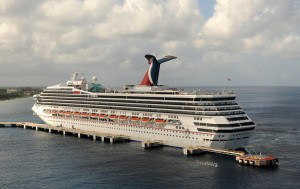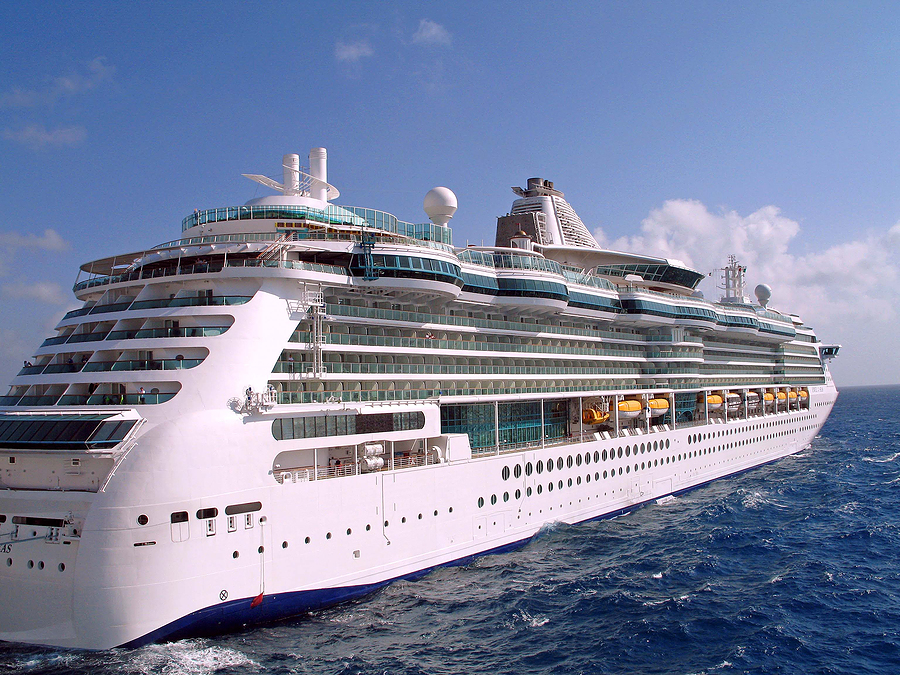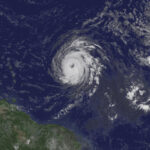The Coast Guard has begun unannounced inspections of cruise ships at U.S. ports, targeting those with patterns of safety problems, officials told the National Transportation Safety Board at its first-ever forum on safety on board the vessels.
Capt. Eric Christensen, who oversees ship inspection policy for the Coast Guard, also said that regular twice-a-year inspections of 140 cruise ships based at U.S. ports in 2013 found 351 deficiencies, most frequently problems with fire doors and lifeboats.
The inspection program began this month.
“There was a population of cruise ships that had the lion’s share of deficiency. You want to focus your efforts on those vessels,” Christensen told the board, without identifying which ships or cruise lines were involved.
“They don’t know you are coming, but this is how you can summarize they would normally operate,” he added. “The bottom line is, we hold substandard vessels accountable.”
Cruise ships must address any safety problems identified by the Coast Guard before they can allow passengers to board at U.S. ports.
The NTSB hearing, held in Washington and webcast around the world, follows last year’s fire aboard the Carnival Triumph that left the ship adrift for days in the Gulf of Mexico, subjecting some 3,000 passengers to squalid conditions. A fire also knocked out power in 2010 to the Carnival Splendor at sea in the Pacific Ocean, also stranding passengers at sea and requiring that it be towed to port.
In 2012, the Costa Concordia ship capsized off Italy, killing 32 people.
NTSB chairwoman Debbie Hersman cited those recent accidents and others aboard increasingly gigantic ships – some of which can carry 6,000 passengers and 2,000 crew members – to underscore the need to ensure the safety of every voyage. She said more than 22 million people will take a cruise worldwide this year.
“When a passenger steps onto a cruise ship, they have the right to expect the safest vessel possible,” said Hersman, whose agency has limited authority to investigate only those cruise ship accidents within 12 miles of U.S. coasts.
Much of the hearing involved the interplay between the Coast Guard safety inspections, rules adopted by the Bahamas Maritime Authority for ships flying under its flag – which include many based at U.S. ports – and a maze of international conventions and rules.
Officials at these organizations, including the United Nations’ International Maritime Organization, described robust safety standards and compliance programs, but they also acknowledged they have few enforcement powers and must rely heavily on the cruise industry itself.
“IMO is not a policeman, as it only develops and agrees to standards and does not implement them,” said Capt. Andy Winbow of the IMO.
One of those standards could explain why passengers remained aboard the Carnival Triumph as it was slowly towed last year through the Gulf to port in Mobile, Ala. Winbow said that beginning in 2000, the cruise industry adopted a policy of using lifeboats for so many thousands of people only as a last resort, essentially deciding a crippled ship is usually safer unless it is sinking.
In 1912 when the Titanic sank in the North Atlantic, Winbow said, “the philosophy is you jump off and get into a lifeboat and go to your rescue.”
“Ships (now) are much bigger and operate in areas like the Titanic did, and areas where there are less available search and rescue resources. It makes the logic of staying on board a much stronger one,” he said. “To make the passenger ship itself – I won’t use the word unsinkable because that was used for the Titanic – but to make the ship a fit place to stay.”
Was this article valuable?
Here are more articles you may enjoy.


 An Unusually Active Hurricane Season Is in Store for the Atlantic
An Unusually Active Hurricane Season Is in Store for the Atlantic  Bankrupt 23andMe’s DNA Data Gets Sale Nod as Concerns Linger
Bankrupt 23andMe’s DNA Data Gets Sale Nod as Concerns Linger  Ticketmaster May Have Broken Law With ‘Platinum’ Oasis Seats
Ticketmaster May Have Broken Law With ‘Platinum’ Oasis Seats  Scammers Are Pushing Auto Loan Fraud to Record Levels
Scammers Are Pushing Auto Loan Fraud to Record Levels 